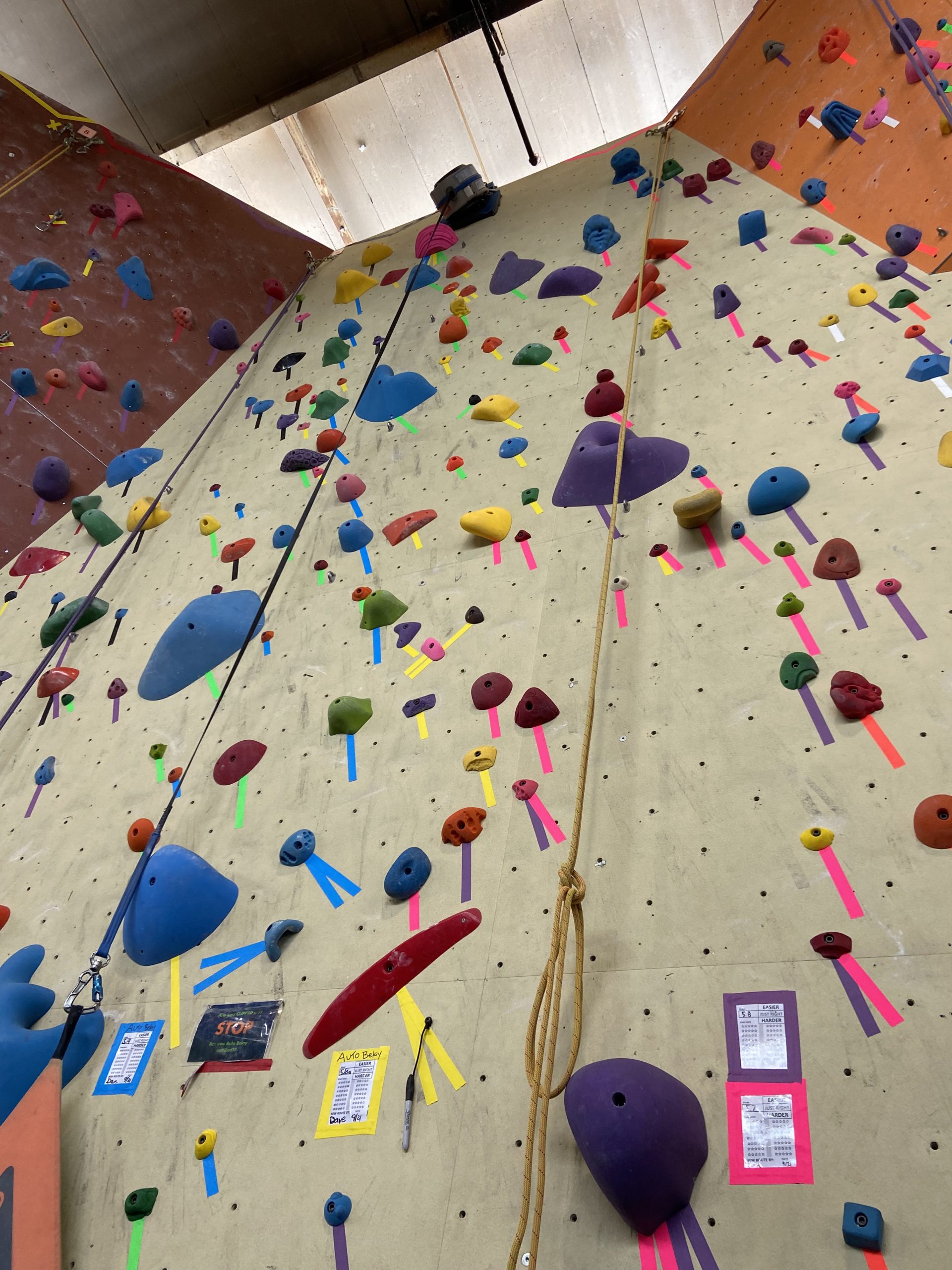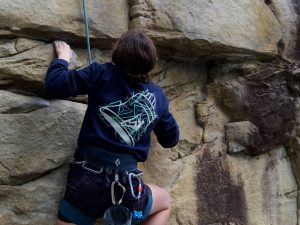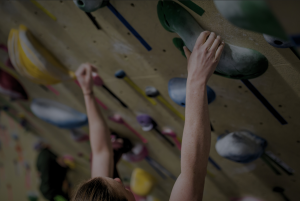Spin Out vs the Barn Door
Spin out is a phenomenon that feels similar to the barn door, but has a different underlying cause.
A barn door occurs when a climber fails to obey cross-body tension. This results in a lack of balance causing the body to “open up” from the plane of the wall.
With a spin out, a climber is following cross-body tension, but their body still “wants” to open up, in this case to spin out of a twist-lock position.
Why Do Spin Outs Occur?
Spin outs occur only in back-steps and only when a climber chooses a foothold that is behind the line. Follow the steps below to get into the back-step position also found in our previous article.
Getting Into Position
1) Grab a good hold, a jug or, preferably, a side-pull, with your right hand.
2) Place your left foot (cross-body tension!) on a good foothold, either in line with or a bit to the right of your handhold. Remember to use your outside edge.
3) Step off the ground and flag your right leg. Make sure this is nice and straight, aiming to keep your thighs parallel.
4) Finally, using your core, twist your lower body into the wall. Aim to get your left hip almost touching the wall, and let your hips drift forward until they feel balanced. They should almost be directly above your left heel.
Practice Spin Out to Learn What Not to Do
To get a feel for the spin out position (so you know what to avoid), follow the steps for trying a back-step. However, in step 2, choose a foot that is 10 or 12 inches to the left of your handhold. This puts your motion point behind the line.
From this foot, get into your back-step position and twist into the lock. Now, hold that position. With your right leg flagged, you will find it is difficult to remain in the lock. In fact, if you chose a foothold fairly far to left, you may find it impossible to hold it.
Regardless, to have any chance of staying in the lock, you will notice that you need to do much more work with your upper body than seems advisable.
Now, go back to your original foot from the demonstration. You should be able to hold the lock with minimal effort from your arms.
It's All About Your Knee
The reason for a spin out has to do with the way our knee works. Without getting too deep into the physics of the problem, the simple explanation is that your knee simply isn’t designed to pull your weight behind you.
In order to get your hips settled over a foot which is behind your center of gravity, you must have something (usually your other foot) push them there. And, in a back-step, there is no foot to push with. Remember your other leg is flagging, and not on any hold it can push on.
As a result, when back-stepping off of a hold that is behind the line, climbers must use arm strength to hold the lock. This effectively wastes energy. It is therefore quite critical to choose appropriate feet for back-steps. These should be feet which are on or in front of the line.
Solution?
If you find yourself limited to footholds positioned behind the line, you might wonder what to do. Fortunately, the solution will be discussed in the following article on drop-knees.
All material is reprinted with the permission of the author. Copyright 2022 David H. Rowland. All rights reserved.









